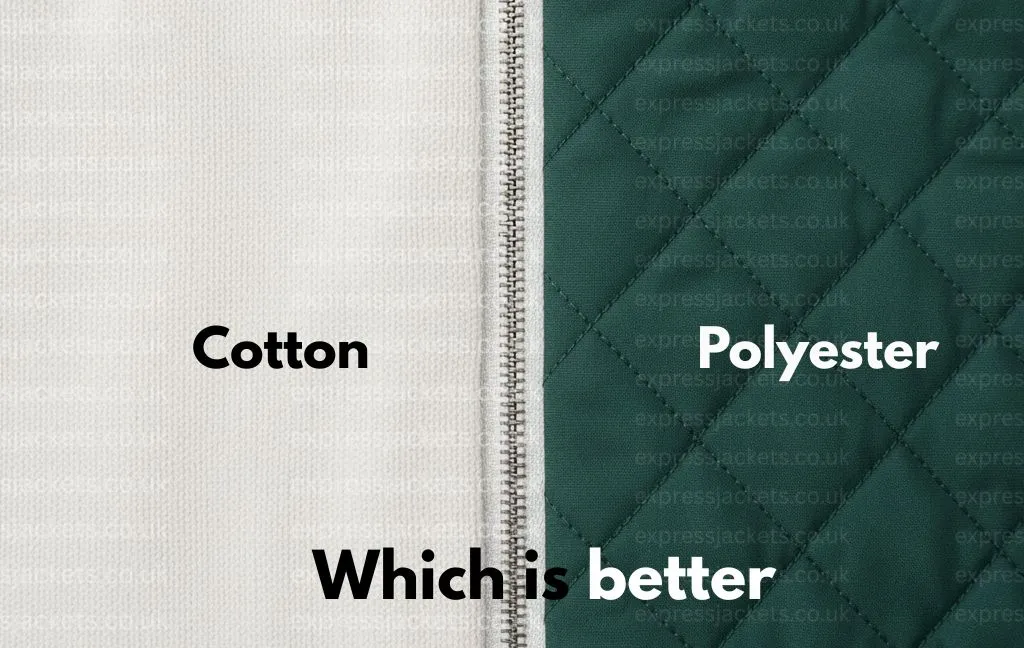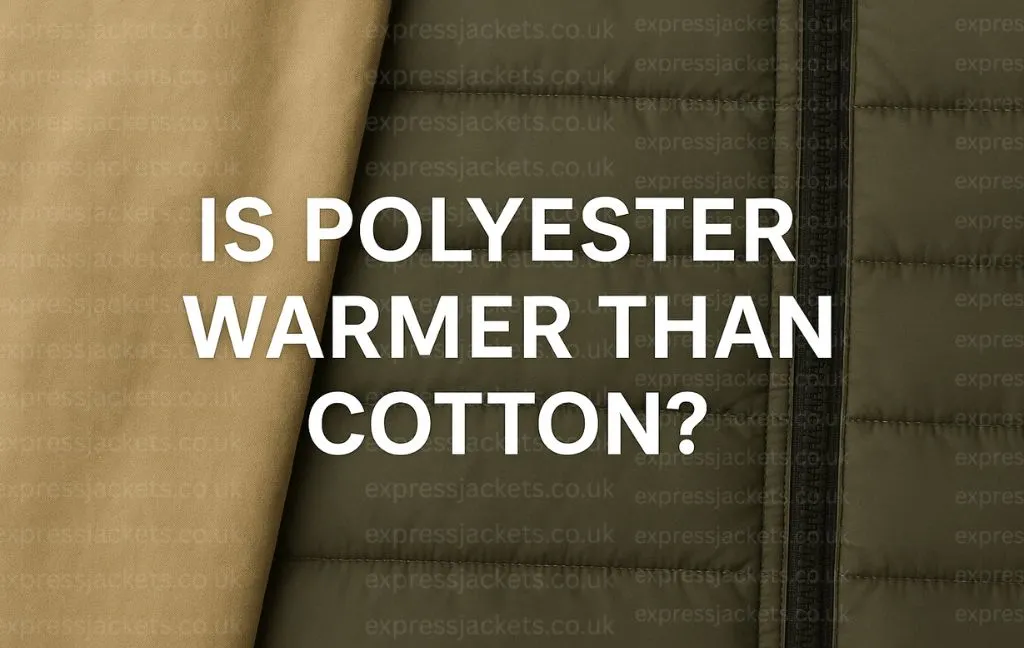Is polyester better than cotton? By and large the response from textile science and outdoor industry is a very definite “yes” in most conditions. While cotton outfits does great in breathability and comfort on that dry warm day, polyester’s synthetic make up puts it in the lead for heat retention, moisture management, and put together performance in cold weather. In breaking down the base level differences in how these natural and synthetic fibers perform with water and in trapping air we see the basis of which to make the best decision for your wardrobe, especially in your choice of fabric for cold weather gear.
The Role of Insulation: How Fabrics Retain Heat.
The issue of a fabric’s warmth goes beyond its thickness; it is also in how well it insulates that we must look. What the fabric does is to trap a layer of air next to the body which acts as an insulating layer. Your body heat warms this trapped air which in turn forms a barrier between you and the cold environment.
- Polyester’s Insulation Advantage: Polyester fibers usually are fine, very close in weave, and also light in weight. Many poly based fabrics like fleece we put together with very small air pockets into the fabric which in turn does an excellent job at keeping in body heat. Also because polyester is hydrophobic (water repelling) its structure doesn’t break down as much when wet which in turn means its insulating value still performs well. This makes it a great option for a thermal mid layer or the outer shell of a jacket which cotton does not do as well.
- Cotton’s Insulation Weakness: Cotton is very absorbent (hydrophilic) which means it can take in 27 times its weight in water. While that makes it great for breathability and coolness in dry heat, in cold weather it is a disadvantage. As cotton takes in sweat or external moisture the fibers plump up, air spaces between the fibers break down and the moisture which is an excellent conductor of heat leaves the body. This is which wet cotton is known to be very cold, which is the reason for the phrase “cotton kills” in outdoor settings.
Moisture Management: The Main Element in Warmth.
Fabric’s moisture management feature is the primary issue which determines warmth especially during physical activity or in damp environments. This is what sets one fabric apart from the other in terms of performance.
- Polyester’s Wicking Power: As a synthetic material polyester repels water. What we see in the case of sweat which comes in contact with polyester fabric is the fibers which act to draw out moisture that in turn travels along the surface of the fabric where it quickly evaporates from the skin. This fast drying action leaves the skin and the layer of clothing which is in contact with it dry which in turn helps to moderate the body’s core temperature. That is why it is the material of choice for athletic wear and in the design of durable base layers which perform well under stress.
- Cotton’s Absorption Pitfall: Cotton has the natural ability to absorb moisture which in turn it does what sweat. During high intensity activity the fabric fills with moisture and stay wet against the skin for a great length of time. Once the activity stops and the body starts to cool the stored moisture which is now at a higher volume draws out a lot of heat from the body causing a cold sensation. Thus although cotton may at first feel comfortable, it’s poor performance in terms of moisture management causes it to be an unsuitable material for which you need continuous warmth in changeable weather.

Durability and Maintenance: A Ten Year Study.
Beyond what is warm, durability and ease of care also play a role in a garment’s cost effectiveness and practicality. In looking at these differences we are able to choose items which will last.
- Polyester’s Robustness: Polyester is known for it’s wear resistant properties which includes strength against stretch, shrinkage and wear. It also does an excellent job of holding dye, resists wrinkling, and is very do well to that which is washed repeatedly. Also it is very resilient which makes it an ideal choice for outer layers of jackets and heavy duty work wear often requiring less care than natural fibers. It is chemical stability which also causes it to break down less in the environment.
- Cotton’s Comfort vs. Wear: Cotton is renowned for its softness and breathability but in general does not do as good a job in terms of durability as polyester. Also it is a issue that it tends to wrinkle and shrink, and that it does not dry well which in turn leads to color fade out and a reduced lifespan in general which is made worse by frequent washing in hot water. That said putting polyester and cotton together in a fabric is very common which is done in order to get the best of both worlds the comfort of cotton and the wear resistance of polyester.
Polyester Cotton Blends: Achieving the Balance.
Today many garments are made of polyester-cotton blends (what also called poly-cotton) which we have put together the best of both worlds in terms of what each material has to offer. What we see in most blends is the introduction of the quick drying and wrinkle resistant properties of the polyester with the soft touch and better air flow of the cotton. We have in these mixed fabrics a great choice for everyday wear and light activity which provides a comfortable feel at the same time also performing better than 100% cotton in terms of how fast it dries and how it holds its shape. Also what we see is that manufacturers use blends to create pieces which perform in a variety of temperature and activity settings.
The Final Verdict on Thermal Performance
For that which is to do with staying warm in cold weather polyester comes out a clear winner over 100% cotton. What polyester lacks in breathability it more than makes up for in its insulative properties and ability to retain warmth when wet which is what makes it the material of choice for baselayers, fleece mid layers, and technical outer wear. Cotton is still the best option for hot dry weather which you want to maximize air flow and cooling via evaporation. The ultimate choice of material really does depend on the intended use and the environmental conditions you will be in. It is to this that one must pay attention when building out a functional wardrobe.
Frequently Asked Questions (FAQs)
Q1. Polyester or cotton which is better?
A: Cotton does better in breathability and comfort, but polyester outdoes in durability and dry time.
Q2. Which fabric is better for high-intensity winter sports?
A: Polyester does better in high intensity winter sports as it is lightweight, moisture wicking, quick drying and also maintains warmth when wet. Cotton on the other hand absorbs moisture which in turn causes it to become heavy, thus it is not a good choice for active winter wear.
Q3. Is 60% cotton 40% polyester good for summer?
A: Yes, in the summer 60% cotton and 40% polyester is a great fabric choice. The cotton makes it light and very breathable which in turn makes it very comfortable while the polyester element of the fabric helps it to dry faster and resists wrinkles.
Q4. Is cotton polyester blend good for summer?
A: Yes. Polyester and cotton mixed together present a practical solution. We see in this blend of materials that which is soft and breathable from the cotton is combined with the durable and quick drying properties of polyester. Thus they are put forth for use in casual, year round wear which is at once to be very comfortable and functional and also doesn\’t break the bank like some of the technical fabrics do.
Q5.Why should I choose a cotton or polyester jacket from Express Jackets UK?
A: Express Jackets has a great selection of cotton and polyester jackets which we put together with comfort, durability and a modern UK twist at great prices.

